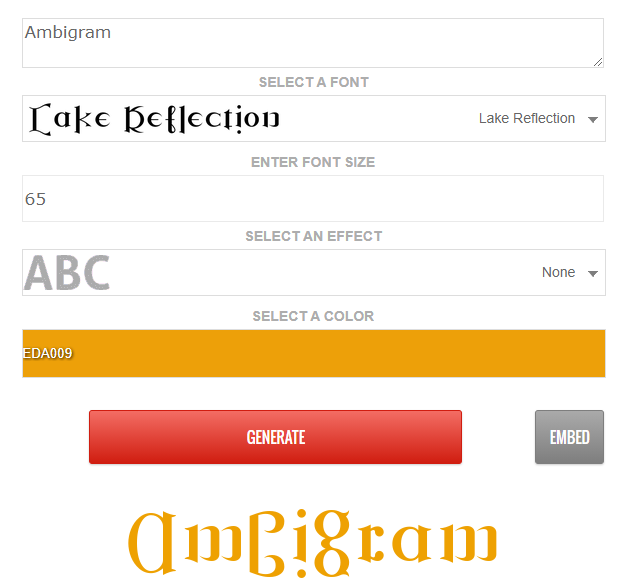Angular is a widely recognized JavaScript framework developed by Google, designed to facilitate the creation of dynamic web applications. Among its iterations, AngularJS (1.x) and Angular 2 represent two significant phases in its evolution. Understanding the differences between AngularJS vs Angular2 is essential for developers, as it impacts their choice of tools and methodologies for building applications.
The transition from AngularJS to Angular 2 is not merely an upgrade; it represents a complete rewrite of the framework. Angular 2 embraces a component-based architecture, utilizes TypeScript as its primary language, and offers improved performance and scalability. This evolution reflects the changing landscape of web development, where modern applications demand greater efficiency and maintainability.
In this article, we will explore the key differences between AngularJS vs Angular 2, examining their features, advantages, and challenges. By understanding these distinctions, developers can make informed decisions about which framework best suits their project needs.
Understanding AngularJS
Release and Background
AngularJS is a free and open-source JavaScript-based web framework developed by Google, initially released in 2010. It was designed to simplify the development and testing of single-page applications (SPAs) by providing a structured approach to building dynamic web interfaces. AngularJS quickly gained traction among developers due to its innovative features and the backing of a strong community, which contributed to its ongoing maintenance and evolution.
Key Features of AngularJS
AngularJS introduced several key features that set it apart from other frameworks at the time:
- Two-Way Data Binding: This feature allows automatic synchronization between the model and the view. Changes in the model are reflected in the view and vice versa, reducing the need for manual DOM manipulation.
- Directives: AngularJS uses directives to extend HTML with new attributes and elements, enabling developers to create custom HTML tags and attributes that enhance functionality.
- Dependency Injection: This design pattern simplifies the management of dependencies in applications, making it easier to develop, test, and maintain code.
- MVC Architecture: AngularJS follows the Model-View-Controller (MVC) architecture, which separates the application logic, user interface, and data management, promoting a clean and organized code structure.
Advantages of AngularJS
AngularJS offers several advantages that make it appealing for developers:
- Simplicity: It is relatively easy to learn and use, especially for small to medium-sized applications, allowing developers to quickly build functional web apps.
- Integration with HTML and DOM: AngularJS seamlessly integrates with HTML, enabling developers to use familiar syntax while enhancing the capabilities of standard HTML elements.
- Large Community Support: With a robust community of developers, AngularJS benefits from extensive resources, tutorials, and third-party libraries, making it easier for newcomers to find help and guidance.
Challenges of AngularJS
Despite its strengths, AngularJS also faces several challenges:
- Performance Issues: As applications scale, AngularJS can experience performance bottlenecks, particularly due to its digest cycle, which can slow down rendering and data updates in large applications.
- Complexity in Managing Scope and Digest Cycle: The framework’s reliance on scopes and the digest cycle can lead to complexity, making it difficult to manage data flow and application state effectively.
- Limited Modularity and Maintainability: While AngularJS supports modular development, its architecture can become cumbersome in larger applications, leading to challenges in maintainability and code organization.
Understanding Angular 2
Release and Background
Angular 2 was launched in 2016 as a complete rewrite of AngularJS, developed by the same team at Google. This new version was designed to address the limitations of AngularJS and to embrace modern web development practices. Angular 2 aimed to provide a more robust framework for building dynamic, single-page applications (SPAs) with improved performance and scalability.
Key Features of Angular 2
Angular 2 introduced several key features that significantly enhanced its capabilities:
- Component-Based Architecture: Unlike AngularJS, which relied on an MVC architecture, Angular 2 uses a component-based architecture. This approach promotes the creation of reusable components, making it easier to manage and scale applications.
- TypeScript as the Default Language: Angular 2 is built using TypeScript, a superset of JavaScript that adds static typing. This allows for better tooling, error detection, and overall code quality.
- Improved Dependency Injection: Angular 2 features a more efficient dependency injection system, making it easier to manage dependencies and improve the modularity of applications.
- One-Way Data Flow: Angular 2 primarily utilizes one-way data flow, which simplifies data management and enhances performance by reducing the complexity associated with two-way data binding.
- Angular CLI: The Angular Command Line Interface (CLI) provides developers with tools for project generation, configuration, and management, streamlining the development process.
Advantages of Angular 2
Angular 2 offers several advantages that make it a compelling choice for developers:
- Faster Performance and Better Scalability: The component-based architecture and improved change detection mechanisms lead to faster rendering and better performance, especially in larger applications.
- TypeScript Benefits: The use of TypeScript enhances code quality through strong typing, which helps catch errors during development and improves overall maintainability.
- Enhanced Mobile Support: Angular 2 is designed with mobile applications in mind, providing better performance and user experience on mobile devices.
- Improved Testing Support: The framework includes better support for testing, making it easier for developers to write and execute tests for their applications.
Challenges of Angular 2
Despite its many advantages, Angular 2 also presents some challenges:
- Steeper Learning Curve: The introduction of TypeScript and the shift to a component-based architecture can pose a steeper learning curve for developers transitioning from AngularJS or those unfamiliar with TypeScript.
- Breaking Changes from AngularJS: The significant differences between AngularJS vs Angular 2 mean that migrating existing applications requires careful planning and effort, as many concepts and practices have changed.
AngularJS vs Angular 2: Differences Explained
AngularJS and its subsequent versions, including Angular 2 and beyond, represent different generations of the Angular framework, each with distinct features and capabilities. Here’s a breakdown of the key differences:
Foundation and Language
- AngularJS: Released in 2010, AngularJS is based on JavaScript. It was designed primarily for building single-page applications (SPAs) and introduced concepts like two-way data binding and dependency injection.
- Angular (2 and later): Angular 2, launched in 2016, is a complete rewrite of AngularJS and is built using TypeScript, a superset of JavaScript. This shift allows for better tooling, static typing, and improved code quality.
Architecture
- AngularJS: Utilizes an MVC (Model-View-Controller) architecture, which can become complex as applications grow.
- Angular (2 and later): Adopts a component-based architecture, promoting the creation of reusable components that enhance modularity and maintainability.
Data Binding
- AngularJS: Features two-way data binding, which automatically synchronizes data between the model and the view. While convenient, this can lead to performance issues in larger applications.
- Angular (2 and later): Primarily uses one-way data flow, which simplifies data management and improves performance by reducing the complexity associated with two-way binding.
Dependency Injection
- AngularJS: Implements a basic dependency injection system, which can become cumbersome in larger applications.
- Angular (2 and later): Offers an improved dependency injection mechanism that is more efficient and easier to manage, enhancing the modularity of applications.
Performance
- AngularJS: Can experience performance bottlenecks, especially in large-scale applications due to its digest cycle and two-way data binding.
- Angular (2 and later): Designed for better performance and scalability, with features like Ahead-of-Time (AOT) compilation and improved change detection.
Tooling and Ecosystem
- AngularJS: Lacks modern tooling support, making project setup and management more manual.
- Angular (2 and later): Introduces the Angular CLI (Command Line Interface), which streamlines project generation, configuration, and management, significantly improving the developer experience.
Community and Support
- AngularJS: Official support for AngularJS has ended, with the last version being 1.7.8, and it reached its end-of-life in January 2023.
- Angular (2 and later): Actively maintained and updated by Google, with a vibrant community that continues to contribute to its development and ecosystem.
AngularJS vs Angular 2: Quick Comparison
| Feature/Aspect | AngularJS | Angular 2 |
| Architecture | MVC (Model-View-Controller) | Component-based |
| Language | JavaScript | TypeScript |
| Data Binding | Two-way data binding | Primarily one-way data flow |
| Dependency Injection | Basic dependency injection | Improved and more efficient |
| Performance | Performance issues with large apps | Faster performance and better scalability |
| Modularity | Limited modularity | Enhanced modularity with lazy loading |
| Tooling | Manual build systems | Angular CLI for project generation and configuration |
| Mobile Support | Basic mobile support | Enhanced mobile support |
| Learning Curve | Easier for beginners | Steeper due to TypeScript |
| Migration | N/A | Requires migration effort from AngularJS |
When to Use AngularJS
AngularJS may still be a suitable choice for certain scenarios, particularly when:
- Legacy Systems: If you are maintaining or updating an existing application built with AngularJS, it may be more practical to continue using it rather than migrating to Angular 2, especially if the application is small to medium-sized.
- Small to Medium Applications: For projects that do not require the advanced features and scalability of Angular 2, AngularJS can be a quick and effective solution.
- Familiarity with JavaScript: Developers who are more comfortable with JavaScript and do not wish to learn TypeScript may prefer to stick with AngularJS.
- Rapid Prototyping: AngularJS is well-suited for quick prototyping and development of applications that do not require extensive backend integration.
When to Use Angular 2
Angular 2 is ideal for modern web applications that demand more robust features and performance. Consider using Angular 2 when:
- Larger, Enterprise-Level Applications: For applications that require scalability, maintainability, and performance, Angular 2 provides a more suitable framework.
- Futureproofing: If you are starting a new project, Angular 2 (or later versions) is the better choice due to its ongoing support and updates, ensuring that your application remains relevant.
- Mobile and Desktop Support: Angular 2 offers enhanced capabilities for building applications that work seamlessly across mobile and desktop platforms.
- TypeScript Adoption: If your development team is ready to embrace TypeScript, Angular 2’s features will significantly enhance code quality and maintainability.
Migration from AngularJS to Angular 2
Migrating from AngularJS to Angular 2 involves several considerations:
- Challenges: The migration process can be complex due to breaking changes between the two frameworks. Developers need to understand the differences in architecture, data binding, and dependency injection.
- Hybrid Approach: Many organizations adopt a hybrid approach, allowing them to gradually migrate parts of their application to Angular 2 without freezing functionality. This method helps maintain user experience while transitioning to the new framework.
- Tools and Resources: There are various tools and resources available to assist with migration, such as the Angular Upgrade module, which facilitates the coexistence of AngularJS and Angular components during the transition.
- Benefits of Migration: Migrating to Angular 2 can lead to improved performance, better maintainability, and access to modern features that enhance the development process.
Conclusion
Both AngularJS and Angular 2 have their respective strengths and use cases. AngularJS is suitable for smaller applications and legacy systems, while Angular 2 is designed for larger, more complex projects that require scalability and modern development practices. As the web development landscape continues to evolve, migrating from AngularJS to Angular 2 (or later versions) is often beneficial, providing developers with a more powerful and efficient framework for building dynamic applications. Embracing Angular 2 ensures that applications remain competitive and maintainable in the long run.
FAQs
What is the primary difference between AngularJS and Angular 2?
The primary difference lies in their architecture; AngularJS uses an MVC pattern, while Angular 2 employs a component-based architecture.
Is it worth upgrading from AngularJS to Angular 2?
Yes, upgrading to Angular 2 offers significant performance improvements, better scalability, and access to modern development practices.
Can AngularJS still be used in modern web applications?
While AngularJS can still be used, it is generally recommended to transition to Angular 2 or later for better support and features.
What are the main performance improvements in Angular 2 over AngularJS?
Angular 2 features a more efficient change detection mechanism, one-way data binding, and improved modularity, leading to faster performance and better scalability.






